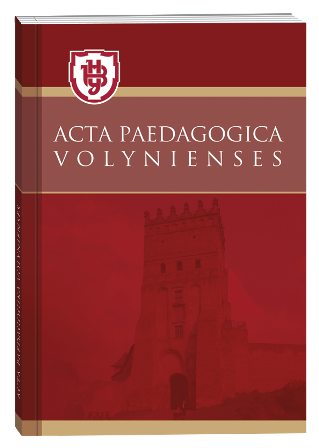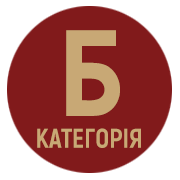AESTHETIC EDUCATION OF PRIMARY EDUCATION STUDENTS THROUGH COMBINATION OF ART AND OPPORTUNITIES OF COMPUTER GRAPHICS, MULTIMEDIA TECHNOLOGY
DOI:
https://doi.org/10.32782/apv/2022.6.5Keywords:
aesthetic education, art, computer graphics, multimedia, aesthetic cultureAbstract
The article deals with the role of aesthetic education in the formation of the personality of primary school students through the combination of art and computer graphics, multimedia technology. The essence of the concept of "aesthetic education" is revealed, which is perceived as a system of measures invested in the development and improvement of the human ability to perceive, correctly, understand, appreciate and create the beautiful, sublime in life and art. The study found that aesthetic education, which combines art and computer capabilities, is interpreted as a purposeful process of forming an aesthetic attitude to the phenomena of reality by influencing the aesthetic qualities of computer graphics. The authors reviewed and analyzed the stages of human development in the framework of continuous artistic development. Thus, it was determined that one of the leading and important stages of aesthetic education, at which students for the first time consciously combine art and the possibilities of computer graphics, multimedia technologies is the third stage, which is associated with schooling. Based on the analysis, it can be argued that computer capabilities are used little within the artistic educational field in primary school and there is an urgent problem in the application of elements of computer graphics, multimedia technologies. The sphere of computer technologies today has a huge technical and software potential. It is determined that for the purposes of aesthetic education of students it is necessary to consciously select the means and programs that allow to realize their own educational tasks. The role of the teacher and the advantages of introducing computer technologies into the educational process of art lessons are revealed. Examples of combining art and the possibilities of computer graphics, multimedia technology are given, which will be appropriate when conducting lessons of artistic and aesthetic cycle.
References
50+ віртуальних екскурсій музеями світу і України. URL: https://osvitanova.com.ua/posts/3833-150-virtualnykh-ekskursii-muzeiamy-svitu-i-ukrainy (дата звернення: 22.12.2022).
Віртуальна екскурсія «Музеї України просто неба». URL: https://museums.authenticukraine.com.ua/ua/ (дата звернення: 22.12.2022).
Гудовсек О. Сучасні тенденції розвитку естетичного виховання молодших школярів. Нова педагогічна думка: наук. журн.; Рівнен. обл. ін-т післядиплом. пед. освіти, Рівнен. держ. гуманіт. ун-т. Рівне, 2012. № 4. C. 86–88.
Дубасенюк О., Сидорчук Н. Естетичне виховання дітей та молоді: теорія, практика, перспективи розвитку: збірник наукових праць. Житомир: Вид-во ЖДУ ім. І.Франка, 2012. 560 с.
Ковбасюк Т. Форми та методи естетичного виховання молодших школярів. Креативність особистості як фактор інноваційного розвитку суспільства : збірн. наук. праць. Вип. 2 / за ред. доц. В.В. Павленко. Житомир : ФО-П Левковець Н.М., 2020. 188 с. С. 66–71.
Московчук Л. Структурні компоненти естетичного виховання здобувачів початкової освіти. Збірник наукових праць. Випуск 26 (1–2019) Частина 1. 2019. С. 143–148.
Сірант Н. Дитина як субєкт естетичного виховання в контексті викликів сьогодення. Гірська школа українських Карпат. Випуск № 19 (2018). С. 18–22.
Ушмарова В. Інновації в початковій освіті: досвід, виклики сьогодення, перспективи: матеріали І науковопрактичної інтернет-конференції здобувачів другого (магістерського) рівня вищої освіти першого року навчання факультету початкового навчання ХНПУ імені Г. С. Сковороди (17 травня 2022 р., м. Харків). Харків : ХНПУ імені Г. С. Сковороди, 2022. Ч. 1. 39 с.







